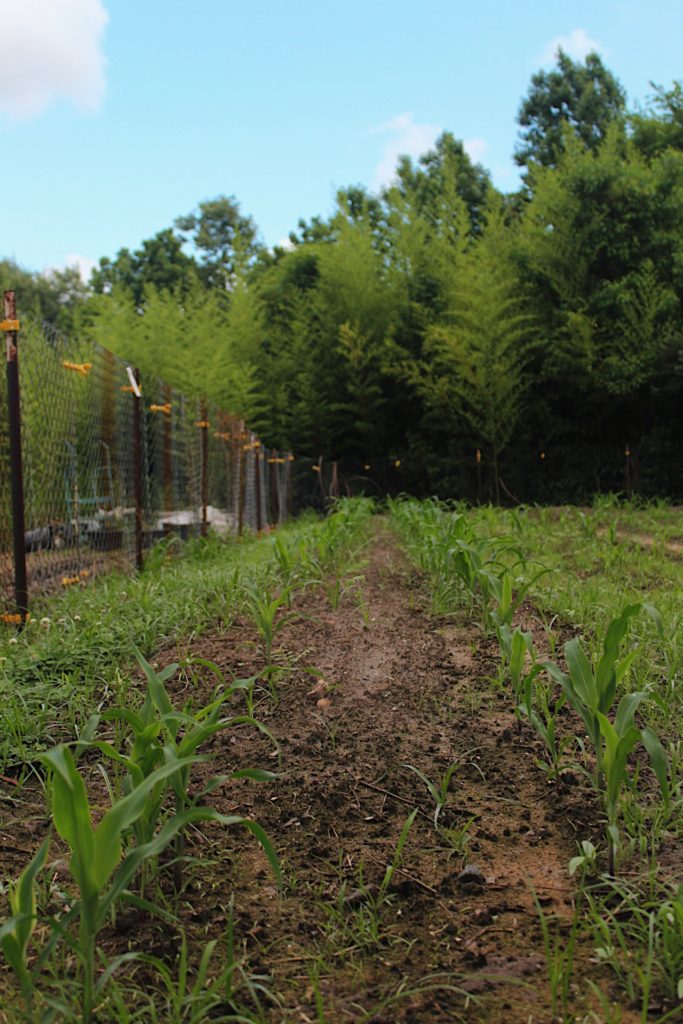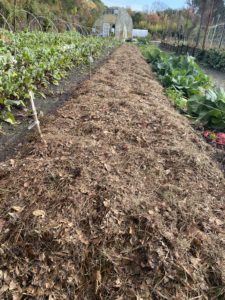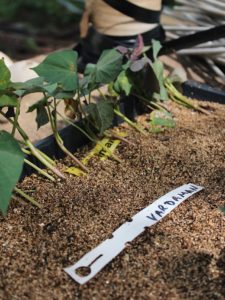It’s good to think of the earth and the local soil as your plant’s home. The dirt needs a good structure to support a plant, and it needs to provide the right amount of nutrition. Plants basically need nutrition from the soil, water, air, and sunlight. Soil fertility depends on several different characteristics and depends on the type of soil you are working with as well as the presence of specific plant-usable nutrients. The characteristics of soil needed for gardens are nutrition, soil structure, and the availability of water and drainage. Another factor is the relative acidity of the soil, ranging from alkaline (or base) to acidic, measured by its pH level.
Soil Nutrients
The primary nutrients needed for fertile soil are nitrogen (N), phosphorus (P), and potassium (K). To sum it up: Nitrogen stimulates green growth; Phosphorus supports roots, fruits, and flowers; Potassium supports general plant health. These are called “macro-nutrients.” These substances are critically important, but they are not the end-all and be-all of plant nutrition. Other vital major nutrients include Calcium (Ca), Magnesium (Mg), and Sulfur (S). Trace elements are also essential, though in lower amounts. These include Iron (Fe), Manganese (Mn), Copper (Cu), Zinc (Zn), Boron (B), and Molybdenum (Mo).

Soil Fertilizers
For fertilizers, both slow-acting organic fertilizers and commercial non-organic fertilizers, the primary rating is based on the content of nitrogen, phosphorus, and potassium. These are called “NPK ratings.” N-P-K values will show as numbers like 10-10-10, or 10-20-5, indicating how much of each type is present. All the chemical mumbo-jumbo aside, it’s important to think carefully about the soil your plants live in. It’s good to have some understanding of what is present and absent for the fruit, vegetables, and flowers in your garden, and for your trees.
Slow-acting organic fertilizers are best because they release nutrients into the soil gradually. Fast-acting non-organic compounds will provide immediate amounts of specific nutrition, but they do that as part of salt compounds. It’s very easy to over-fertilize when using this kind of fertilizer. This can result in a “Fertilizer Burn,” which causes leaves to turn yellow or brown, and water draining from the soil can be toxic. The quick-release fertilizers increase the salt content of the soil, too.
Slow-release fertilizers are great. They are much better than quick-releasing fertilizers. They release the nutrients slowly, over time. These can be artificial or organic. The artificial types use a coating that slowly breaks down, releasing the nutrients gradually. Organic fertilizers and soil amendments will break down naturally and decompose.
Composting
Adding compost to your garden on a regular basis, and using organic home-grown type mulching, like straw, wood chips, and leaves instead of purchasing artificially colored mulch, is much better for the plants and the soil. Organic amendments include worm castings and compost. Compost can be made in your own yard in a compost pile with some garden dirt, yard waste, and food waste like banana peels, trimmings from root veggies, and other food that might otherwise end up in the garbage disposal. Stir the compost pile up every month or so. If the soil really needs help, a slow-release fertilizer could be the best option.

Planting cover crops is another pretty essential step. In the fall, once all your garden crops have been harvested at right about four weeks from the first frost date in your area, cut the annual plants down and scatter seeds for some grains, legumes (beans!), or plant some radishes. A few good grains include Ryegrass or Buckwheat, and a few relatively easy legumes are Hairy Vetch or Field Peas. These kinds of plants will add nitrogen back into the soil naturally, keep weeds down, discourage pests and disease, and just provide some natural variation in the soil that keeps it refreshed and nutritious for a healthy garden.
Plants without enough nutrients will often be stunted in growth, won’t develop properly, and are more susceptible to plant diseases. They also won’t taste as good! Undernourished vegetables will often be bland and unappetizing in flavor. It’s important to remember that the N-P-K rating is not the only thing to measure. Calcium, sulfur, and magnesium are also major nutrients to keep track of, and those trace elements like boron, iron, and others are important too, even though they are needed in much lower quantities.
Soil Structure, or in other words, the basic type of soil, falls into several main categories: Loamy, sandy, clay, silty, chalky, and peaty. Loamy soil is earthy and nourishing. It’s the most highly sought-after type of garden soil. Loamy soil is a mixture of soil types that drains well and avoids pooled water but stays somewhat damp for long enough to allow the plants to use the available nutrition. Sandy soil is loose, drier, and often acidic, and typically has less nutrition to start with. It can be supplemented and does drain well. Clay-type soils are usually alkaline and have very good nutrients, but water can pool and not drain as well unless the soil is prepared first. Silty soil is easy to work with. It’s smooth and usually has neutral acidity and is high in nutrients. It does need some help with ensuring good drainage. Chalky soil is a bit stony usually, and very alkaline. Some plants will grow OK in chalky soil but it’s usually best to take steps to amend this soil for a garden. Peat-type soil is naturally alkaline, lower in nutrition, and will likely need some drainage help to avoid too much water retention. Peat soils are often added to acidic soils to create a balance.
Different plants need different types of soils. As stated, many prefer loamy soil, but individual plants can prefer somewhat sandy soil or even clay soil. The best soil acidity for most plants is neutral, usually between 5.5 (slightly acidic) up to 7.5 pH or so. or so. Some plants prefer slightly acidic (low pH) soil. Others prefer (or can tolerate) slightly alkaline or base (high pH) soil.

It’s important to test your soil for basic nutrient levels and acidity. Test kits can be purchased from gardening suppliers on Garden Savvy, at home improvement stores like Home Depot or Lowe’s, or even at Walmart or online. Local garden centers are a good choice too, and they may have more options. Soil amendments and slow-release fertilizer can be added as needed, after testing. Soil structure can also be modified. Both clay and sandy soils can be amended with compost, wood chips, and organic mulch like straw, lawn clippings, and shredded leaves. This will add drainage structure for clay soils, and for sandy soils, it will add organic matter and nutrients, as well as improve the structure.
Just remember, really think about your garden as the home for your garden plants. What do they need? What would make their lives better? Does their house need a carpenter, a roofer, or a plumber? Care for the environment of your garden as you would for your family and your plants will thank you for it!
Joining our gardening community is the perfect way to discuss soil fertility and troubleshoot with other gardeners. Signup for the community and start posting!

Contact Author
 info@gardensavvy.com
info@gardensavvy.com Recent Posts
- Smart Gardening: How Technology Is Revolutionizing Horticulture
- Understanding Gardening Zones: What You Need to Know
- The Right Tools For Your Gardening And Landscaping Needs
- Maximizing Your Harvest: Square Foot Gardening Chart for Beginners
- Holiday Garden Scents: Plants for Natural Aromatherapy in Your Home









